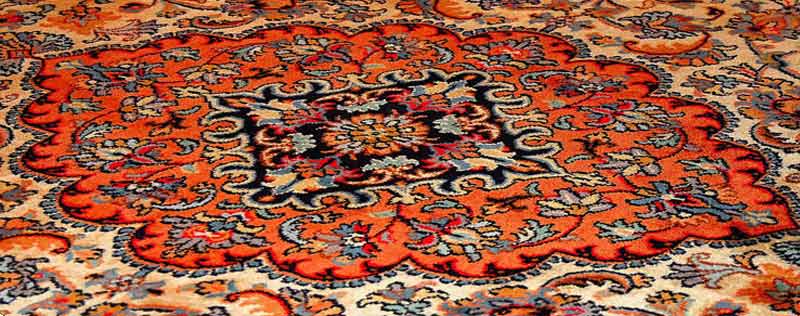Art and Craft Tour Packages in India
Uttar Pradesh, because of its proximity to Delhi and Jaipur is a great itinerary extension to the Golden triangle tour packages, The state which hosts Taj Mahal in Agra, has a lot to offer to a domestic as well as the international tourists but the highlight of the region is the Handloom and handicrafts industry that has been in existence for a number of years. The art and craft packages in India are totally unique and nowhere in the world one would experience the similarity.
The melting pot of cultures, and civilizations and dynasties, Uttar Pradesh boasts of a handicrafts tradition that has borrowed from many traditions and is thus as varied and as diverse as its people, it surely enriches and enhances the experience of traveling to India. Some of the major crafts of the state are listed below:
Benarasi silk saris have long captivated the international market with their sheen and rich texture, and add considerably to an Indian bride’s trousseau. Once woven with pure gold and silver threads, these gossamer weaves now use synthetic threads to make them economical.
Apart from karan (pure) silk saris, there are kora (organza), shattir and georgette sari, with zari work like jamdani, jangla, jarnwar tanchoi, and bootidar.
Chikankari -derived from the Persian word chikeen, which means embroidery – originated in Lucknow and reached its zenith during the Mughal era. Originally done only on white shazaada cotton or Dhaka malmal brought from Bangladesh, today, to make production cheaper, chikankari is also done on silk, net, organza, cotton, muslin and chiffon.
Both Banaras saris and brocade and chikankari have been assigned Geographical Indication (GI) status, which prohibits imitation of this product.
Carpet weaving in Uttar Pradesh is credited to Emperor Akbar, who set up karkhanas (workshops) in Agra and Fatehpur Sikri to promote the craft. Today, it thrives in Bhadohi, Mirzapur, Aligarh and Agra districts. Where, apart from carpets, weavers also produce the light weight dhurrie rugs used as prayer mats. Traveling in interiors would ensure super deals !
Ernbroidery, especially the immensely popular kamdani and fardi needle work, done with metal wires; and zardozi, done using gold and silver threads, are both popular in and around Lucknow and Bareilly. The more economical patti work or applique, wherein floral or abstract patterns in cloth are stitched on to a bigger fabric, is mostly seen in Rampur, Bahraich, Sravasti, Lucknow and Aligarh. Pattiwork on saris, dupattas, bed sheets and cushion covers is quite popular.
The foreign tourists are fascinated with Brassware from Moradabad , it has such high demand that the district’s per annurn earning through exports alone is over 2,000 crores. The ‘city of brass’ with over 5,000 small scale brass industries, produces utility products like jars, vessels, puja paraphernalia, bathroom fittings and office accessories, as well as decorative items with rich meenakari such as pots, candle holders, plates and statues.
Stone and marble carving flourished in India during the Mughal period and can be seen in the various monuments of that era. The stunning pietra dura, an inlay of highly polished coloured stone pieces embedded in marble, and pacchikari, the inlay of semi-precious stones, can both be seen in the magnificent Taj Mahal. Today this art is seen in customised table tops and decorative items.
Furniture making is another famous handicraft of the state, lead by the small town of Saharanpur, known primary for its production of high quality of sheesharn woodwork. Done by craftsmen of Kashmiri descent, the woodwork is typically decorated with floral patterns, such as grape vine, which are common to Kashmiri designs. Low relief work, called chilai, is common on cutlery, trinkets and other such small accessories; while takai or high relief work is mostly seen on export quality furniture.
Tarkashi, brass and copper wire inlay in wood, is common in Nagina in Bijnor district, and in Saharanpur. Beautiful floral and geometric patterns are made on both articles of use and decoration.
The exquisite black pottery of Nizamabad and the popular blue pottery and ceramic of Khurja have made their way into many households. Shiny black flower vases, tea pots, statues of gods and goddesses with gold or silver patterns are made and exported in large numbers. The blue pottery of Khurja, a small town 90 kms from Delhi, is made with a mixture of powdered quartz and later glazed blue. Stone ware, bone China, earthen ware and terracotta pottery is produced on a large scale and sold both in domestic and international markets.
The glass chandeliers, tumblers, cutlery, lamps and decorative beads of Firozabad need no introduction. This town is responsible for at least 70 percent of India’s glass production, with large scale exports to the United States, Kuwait, Dubai, Spain, Australia, France and Hong Kong.
Sanjhi, which is the traditional paper stencil artwork of Brajbhoomi, is used as temple decoration in Vrindavan and Mathura, displayed generally during festivals. Depicting scenes from Krishna’s life, products with sanjhi art are now sold in craft stores for the urban audience.
Knives from Rampur, once notoriously used by bandits, and the sturdy brass locks from Aligarh, have now made a household name for themselves.
For more information on art and craft tour Packages in India contact Swan Tours, one of the leading tour operators in India.

